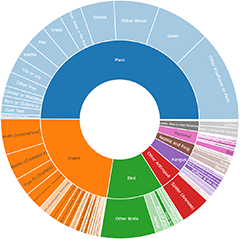Bawley Point Bushcare
Announcements
Discussion
marcycad
wrote:
8 Jan 2025
The absence of prominent cluster bracts over the flower spike rules out X. australis, the upper aspect of the leaf appears flattened to concave in some, this is also inconsistent with X. australis, therefore this is likely either X. resinosa or the affiliated X. concava.
Xanthorrhoea sp.
HaukeKoch
wrote:
17 Jan 2024
Interestingly the one on the top is a different species, probably Schizognathus burmeisteri.
Anoplognathus olivieri
Pam
wrote:
26 Oct 2020
That 'hoof' shape and the colour of pores indicates a Phellinus sp. maybe P. robustus. This genus causes white rot and is found on both dead or living wood of both angiosperms and gymnosperms . Ganoderma have white pores and also cause 'white rot' and grow mainly on angiosperms.
Good images, thank you.
Good images, thank you.
Phellinus sp.
Marg
wrote:
28 Sep 2020
One ridge that I can see. There were also more than I estimated at first, 25 plants in total.
Diuris sulphurea
NicholasdeJong
wrote:
28 Sep 2020
Looks like D. sulphurea going by the brown markings. If you have good eyes or a hand lens look at the labellum. If it has one ridge its D. sulphurea, Two ridges down the centre back especially, then its D. aurea. Also its a bit south for D. aurea.
Diuris sulphurea



